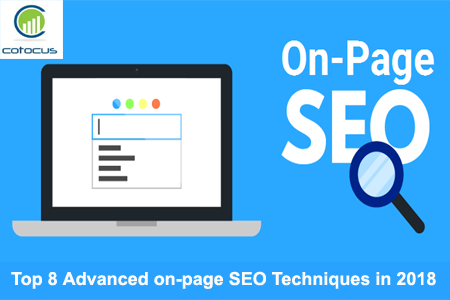
The on-page SEO techniques are related to all the internal elements of a website which are optimized to make your website SEO friendly. On-Page is one of the best techniques used to improve traffic to a website. On-Page SEO techniques are related to all the internal elements of a website that have been customized to make your website SEO-friendly. See the list of Top 8 Advanced on-page SEO Techniques in 2020
1. Meta Title – Meta Title is also known as Page Titles which play a vital role in SEO technique. You should try to use a keyword or phrase targeted towards the beginning of the title tag, but if this is not possible, then make sure that it is at least in the title.
You should not repeat the same keyword more than once in the title tag because you think this article will help rank the highest. It will not really hurt your ranking. Do not do this and keep the title length to under 65 characters.
2.Meta Descriptions – In December 2019, Google announced that it is increasing the snippet of 320 characters on its search results pages. First of all, Google representative did not advise to worry about changing Meta descriptions on your site after this update, because of how Google generates snippets dynamically based on individual search queries with this change.
Google has recently extended the character length of the Meta description to 320 characters. You will see a change in the SERP, instead of having 2 rows of Meta descriptions, there may be 4-6 lines of Meta description length. Be sure to see your meta-data and update it as soon as possible.
3.Meta tags – You should use the targeted keyword you used in the Meta description, but the keyword should not be spam in your statement. While picking on search engines keywords, users are also important to click on the post. You need to write a user-friendly Meta description that is understandable and related to your post.
4.Heading Tags – You should use the Heading tag to highlight different headers, sub-titles, and key points. In Word Press, the title tag is set to H1. You do not have to use the tag anywhere in the article. One is quite for a section break, stick to the tag. Also, do not use too many tags because Google’s algorithms will not like it.
5.URL structure – To ensure that your URL displays correctly, it is an important on-page metric. Then, you should use your targeted keyword in the URL, and avoid using special characters, symbols, brackets, commas, etc. within the real URL. Use dashes to differentiate the strings in your URL structure.
6.Keyword Density – The keyword density is the percentage of the keyword or phrase being displayed on a web page compared to the total number of words on the page. In the context SEO, keyword density can be used to determine if a web page is relevant to the specified keyword or keyword phrase.
7.Internal Linking and External Linking – Interlinking blog posts will help your blog readers spend more time on your website, and it will also help to exceed the page rank on other pages of your site. Apart from linking your blog post, linking external websites is also a good idea. Again, do this only when the information about the external website is relevant to your post information.
8.Work on Speed Loading – The website is not just a way to provide information. They are a resource that visitors know exactly what they want. So you need to check the current speed of the website. Make sure you use some of the tools Google provides. Pages pad Insights is one of the best websites that helps you reach your site’s loading speed. It scores your website from 0 to 100. If the speed of site loading is 80 and above, then you are on the good chart. This website also gives you recommendations for changes that you can implement to speed up. Otherwise, you can find a company that provides affordable SEO services and complete a speed test.
- Website Development Company in Chennai - July 14, 2023
- Website Development Company in Coimbatore - July 14, 2023
- Website Development Company in Jaipur - July 14, 2023

